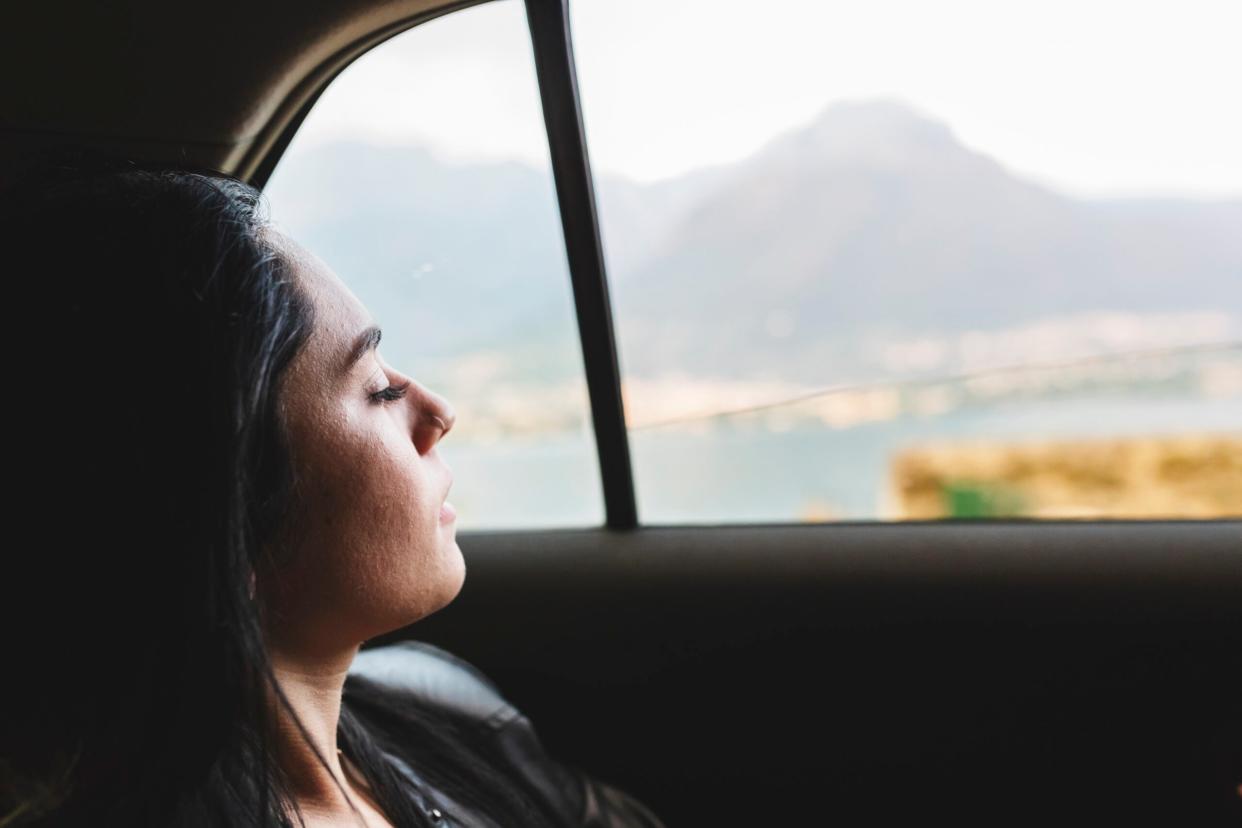How to Ease Your Motion Sickness—No Medication Required

This article originally appeared on Outside
It’s summer. That means it’s time for road trips, sailing excursions, or flying off to vacation destinations. But all that getting away isn’t much fun if traveling makes you feel queasy. And statistics reveal that you are not alone: two-thirds of people experience motion sickness. There are remedies, but the currently available medications often induce drowsiness-meaning you might sleep through your joyful travel experience.
The good news is that there are natural, non-pharmaceutical ways to get relief-including yogic breathing.
Why Do You Feel Queasy?
Motion sickness occurs when there is a mismatch between sensory signals. For instance, when you’re in a moving vehicle, your inner ear tells you you're moving, but if you're looking at a book or smartphone, your eyes may perceive stillness. This sensory disconnect can disrupt the normal functioning of your vestibular system, which is responsible for maintaining your balance and equilibrium. This can lead to symptoms such as nausea, dizziness, and vomiting.
It's not just travel that causes motion sickness. An upset stomach can occur when you're exposed to any kind of turbulent motion. Research suggests that some people get ill from airplane turbulence, amusement park rides, schussing down ski slopes or even camel riding. You can even experience motion sickness sitting still, such as when you're playing video games or wearing a virtual-reality headset.
Some people rarely experience motion sickness. Your susceptibility may vary based on factors like genetics, previous experiences, and individual physiology. However, if you are one of the few who could experience seasickness on dry land (raising my own hand here) motion sickness medication helps reduce signals of nausea and vomiting by blocking the relevant neurotransmitters in your brain.
Breathwork Works
A 2015 study published in The Journal of Physiology found that people who experience motion sickness may have an increased sympathetic response (fight or flight) and reduced parasympathetic activity (rest and digest) when they get sick. This research suggests that balancing your sympathetic and parasympathetic branches, as well as hormonal and cortical patterns, may be the key to alleviating some symptoms.
"Breathwork has the power to bring about a sense of inner calm," according to Linda Stern Lang, a clinical instructor at the George Washington University Center for Integrative Medicine. It can induce physiological changes that relax your gut and shift your biochemistry, alleviating the stressors responsible for nausea. For motion sickness relief, Lang suggests practicing diaphragmatic breathing and alternative nostril breathing. In both cases, breathe slowly and keep your head still.
A Breathing Practice To Combat Motion Sickness
To practice diaphragmatic breathing, Lang recommends the three-part breathing technique below to cultivate relaxation, calmness, and control in your body. This allows you to reclaim a sense of well-being when you're not feeling well, advises Lang.
How To Do It:
Sit tall and close your eyes, focusing your inner gaze toward the center of your head.
Place your hands on your belly, just below the ribcage.
Think of your body as having three open sections: the upper chest, mid-chest, and belly.
Breathe softly into your belly, feeling it gently expand under your hands.
Continue by filling the middle chest then the upper chest with the breath, allowing your entire body to expand.
Exhale slowly from the upper chest, then mid-chest, and finally the belly, feeling your body contract.
Maintain a gentle, steady, and balanced breathing cycle--inhale-inhale-inhale, exhale-exhale-exhale.
Lang recommends exhaling with a hum or sigh to encourage deeper release of symptoms of nausea or anxiety associated with motion sickness.
Alternative Therapies for Motion Sickness
Ongoing scientific research supports some of the tried-and-true nausea reducers.
Ginger
As one of the most studied alternative therapies, ginger has shown scientific promise in reducing symptoms of motion sickness. Researchers aren't entirely certain about its mechanism, but it is believed to interact with the receptor responsible for triggering vomiting.You can consume ginger in various forms, such as through ginger candy, tea, capsules, or candied ginger pieces.
Acupressure
Applying pressure to specific points on your body, such as the P6 point (located on the inner side of your forearm, about two inches above your wrist), can relieve nausea associated with motion sickness. You can also try wearing wristbands with built-in acupressure points designed to target these areas. Scientists propose that acupressure might work by stimulating specific regions of the brain via the vagus nerve, potentially influencing how the body regulates blood sugar and digestion during motion sickness.
An Ounce of Prevention
To avoid motion sickness in the first place, these four tips can help:
Get Some Fresh Air. Keeping your environment well-ventilated can help reduce the feeling of nausea by diluting strong odors, improving air circulation, aligning visual cues with inner ear balance, and increasing oxygen levels. Open a window or direct air vents toward your face to provide relief.
Keep Your Eyes on the Horizon. Fixing your gaze on a stable object or the horizon can help reorient your senses and reduce motion-sickness symptoms. Avoid concentrating on moving objects or reading while in motion as a passenger.
Pay Attention to Your Position. Sitting in a location where you experience less motion can be helpful. For example, choosing a seat near the wings of an airplane can provide a more stable experience. The same rule applied for the front seat of a car.
Avoid Strong Odors. Intense smells or odors can worsen nausea. Try to avoid strong perfumes, gasoline fumes, pungent foods, and other potent odors.
For exclusive access to all of our fitness, gear, adventure, and travel stories, plus discounts on trips, events, and gear, sign up for Outside+ today.

